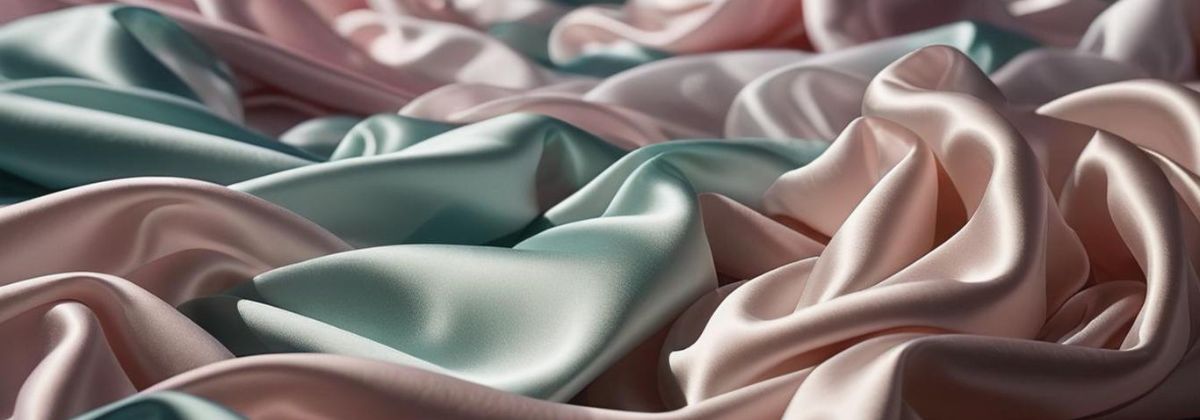01 Jul Expert Tips for Washing Satin Fabrics: Keep Your Satin Luxurious
Satin is one of those luxurious fabrics that can add a touch of elegance to any wardrobe or home decor. But, like most good things, satin requires special care to maintain its beauty and longevity. Washing satin fabrics can be tricky due to their delicate nature. Still, with the proper techniques, you can keep your satin items pristine for years. In this article, we’ll explore the best methods and tips for washing satin fabrics to ensure they remain in excellent condition.
Washing Satin Fabrics Techniques
- What is Satin?
Satin isn’t a type of fibre; it’s a weave resulting in a smooth, glossy surface on one side and a duller back. This distinctive weave can be made from various fibres, including silk, polyester, and nylon. The weave’s characteristic sheen and drape are what give satin its luxurious appeal.
- Types of Satin
There are several types of satin, each with unique properties. Some common varieties include:
- Antique Satin: A heavier fabric often used in home decor.
- Baronet Satin: Made from rayon or acetate, with a cotton back.
- Charmeuse: A lightweight satin, often used in lingerie and evening wear.
- Crepe-Back Satin: Has a crepe texture on one side and a satin finish on the other.
Preparation Before Washing Satin Fabrics
- Checking the Care Label: Always check the care label on your satin item before you do anything. The manufacturer’s instructions are your best guide to prevent damage.
- Sorting Satin Fabrics: Separate your satin fabrics by colour and type. Mixing darks and lights can lead to colour bleeding while mixing different types can cause abrasion.
- Inspecting for Stains: Check your satin items for stains and treat them before washing. This can prevent the stains from setting in permanently.
Hand Washing Satin
- Why Hand Washing is Preferred
Hand washing is often recommended for satin because it reduces the risk of damage. The gentle nature of hand washing helps preserve the fabric’s integrity.
- Step-by-Step Hand Washing Guide
- Fill a Basin with Cool Water: Use cold or lukewarm water to avoid shrinking or weakening the fibres.
- Add Mild Detergent: Use a detergent designed for delicate fabrics. Avoid harsh chemicals.
- Submerge the Satin Item: Gently swirl it in the water. Avoid wringing or twisting the fabric.
- Rinse Thoroughly: Rinse the satin item in cool water until all the detergent is gone.
- Blot Excess Water: Use a clean towel to blot out excess water. Do not wring.
- Drying Hand-Washed Satin
Lay the item flat on a dry towel and roll it up to remove more water. Then, lay it flat on another dry towel to air dry.
Machine Washing
- Is Machine Washing Safe?
Machine washing can be safe for satin, but it depends on the type of satin and the machine settings. Always check the care label first.
- Choosing the Right Detergent
Use a mild detergent specifically for delicate fabrics. Avoid bleach and fabric softeners, which can damage satin.
- Selecting the Appropriate Machine Setting
Set your washing machine to a delicate or gentle cycle with cold water. Use a mesh laundry bag to protect your satin items.
- Drying Machine-Washed Satin
Avoid using a dryer. Instead, follow the same drying process as hand-washed satin: blot with a towel and air dry.
Dealing with Stains
- Common Satin Stains
Stains on satin can be particularly challenging due to the fabric’s delicate nature. Here are some common types of stains you might encounter and tips on how to handle them:
- Makeup Stains: Foundation, lipstick, and other makeup products can leave noticeable marks on satin.
- Sweat Stains: Often seen around the collar and underarms, these can discolor the fabric over time.
- Food and Beverage Stains: Spills from coffee, wine, and sauces are common culprits.
- Spot Treatment Techniques
Effective spot treatment is crucial for removing stains without damaging satin. Here’s how to tackle different types of stains:
- Makeup Stains: Dab the stain gently with a soft cloth dipped in water and a few drops of mild detergent. Avoid rubbing, as this can spread the stain and damage the fibres.
- Sweat Stains: Mix equal parts of white vinegar and water. Soak a clean cloth in the solution and gently dab the stained area.
- Food and Beverage Stains: Blot the stain immediately with a clean, dry cloth to absorb as much of the spill as possible. Then, use a cloth dipped in cool water to dab the stain. Avoid hot water, which can set the stain.
- Using Stain Removers Safely
When using commercial stain removers, choosing products safe for delicate fabrics like satin is essential. Here are some tips:
- Test First: Always test the stain remover on an inconspicuous area of the fabric to ensure it doesn’t cause discolouration or damage.
- Follow Instructions: Adhere to the product’s usage instructions carefully. Overusing or misusing stain removers can harm the fabric.
- Avoid Bleach: Never use bleach or products containing bleach on satin, as it can weaken the fibers and cause permanent damage.
Drying Satin Fabrics
- Air Drying: Air drying is the safest and most recommended method for drying satin fabrics. After washing, gently press the satin fabric between two clean, dry towels to remove excess water. Avoid wringing or twisting the fabric, as this can cause damage. Lay the satin item flat on a dry towel in its natural shape. This helps prevent stretching and distortion. Place the item in a well-ventilated area away from direct sunlight. Sunlight can fade the fabric and weaken its fibres.
- Machine Drying: Machine drying is generally not recommended for satin due to the high risk of damage. Set the dryer to the lowest heat setting or the “air dry” option to minimize the risk of damage. Place the satin item in a mesh laundry bag to protect it from snagging or tangling with other items. Check the item frequently to avoid overheating or becoming misshapen.
The Last Word
Taking care of satin fabrics may require a bit more effort, but the results are worth it. By following these washing techniques and care tips, you can ensure your satin items remain as beautiful as the day you bought them. Remember, gentle handling and mindful care are the key to preserving satin’s luxurious feel and appearance.




Sorry, the comment form is closed at this time.